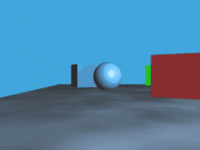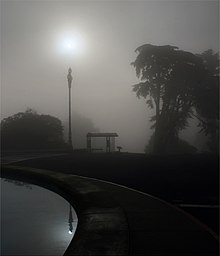Paralaks: Pabidaan ralatan
s added Category:Trigonometri using HotCat |
Kadada kasimpulan babakan |
||
| Baris 16: | Baris 16: | ||
==Catatan Batis== |
==Catatan Batis== |
||
<references/> |
<references/> |
||
==Raralatan Luar== |
|||
* [http://inner.geek.nz/javascript/parallax/ Instructions for having background images on a web page use parallax effects] |
|||
* [http://www.perseus.gr/Astro-Lunar-Parallax.htm Actual parallax project measuring the distance to the moon within 2.3%] |
|||
* BBC's [http://www.bbc.co.uk/science/space/universe/questions_and_ideas/astronomical_distances/#p00bf0l7 Sky at Night] programme: Patrick Moore demonstrates Parallax using Cricket. (Requires [[RealPlayer]]) |
|||
* Berkeley Center for Cosmological Physics [https://web.archive.org/web/20120303140550/http://bccp.lbl.gov/Academy/pdfs/Parallax.pdf Parallax] |
|||
* [http://www.phy6.org/stargaze/Sparalax.htm Parallax] on an educational website, including a quick estimate of distance based on parallax using eyes and a thumb only |
|||
* {{Cite Collier's|wstitle=Sun, Parallax of the |short=x}} |
|||
[[Tumbung:Astrometri]] |
[[Tumbung:Astrometri]] |
||
Ralatan matan 20 April 2021 22.43


Paralaks (baasal matan kata Yunani Bahari παράλλαξις (parallaxis) nang artinya alternisasi) marupakan pamindahan atawa parbidaan dalam malihat andak sabuting ubjik lawan dua buting sudut pandang nang balain wan diukur lawan sudut atawa semi-sudut kamiringan antara dua garis ngitu.[1][2] Maraga perspektif, ubjik nang taparak manampaiakan paralaks nang taganal pada ubjik nang tajauh amun diitihi matan andak nang balaian, jadi paralaks kawa dipakai gasan manantuakan jarak.
Perspektif visual

As the eyes of humans and other animals are in different positions on the head, they present different views simultaneously. This is the basis of stereopsis, the process by which the brain exploits the parallax due to the different views from the eye to gain depth perception and estimate distances to objects.[3] Animals also use motion parallax, in which the animals (or just the head) move to gain different viewpoints. For example, pigeons (whose eyes do not have overlapping fields of view and thus cannot use stereopsis) bob their heads up and down to see depth.[4]
The motion parallax is exploited also in wiggle stereoscopy, computer graphics which provide depth cues through viewpoint-shifting animation rather than through binocular vision.
Weapon sights
Parallax affects sighting devices of ranged weapons in many ways. On sights fitted on small arms and bows, etc., the perpendicular distance between the sight and the weapon's launch axis (e.g. the bore axis of a gun)—generally referred to as "sight height"—can induce significant aiming errors when shooting at close range, particularly when shooting at small targets.[5] This parallax error is compensated for (when needed) via calculations that also take in other variables such as bullet drop, windage, and the distance at which the target is expected to be.[6]
Catatan Batis
- ^ "Parallax".Shorter Oxford English Dictionary.(1968). “Mutual inclination of two lines meeting in an angle”
- ^ "Parallax".Oxford English Dictionary(Second).(1989). “Astron. Apparent displacement, or difference in the apparent position, of an object, caused by actual change (or difference) of position of the point of observation; spec. the angular amount of such displacement or difference of position, being the angle contained between the two straight lines drawn to the object from the two different points of view, and constituting a measure of the distance of the object.”
- ^ Steinman, Scott B.; Garzia, Ralph Philip (2000). Foundations of Binocular Vision: A Clinical perspective. McGraw-Hill Professional. hlm. 2–5. ISBN 978-0-8385-2670-5.
- ^ Steinman & Garzia 2000, p. 180.
- ^ "Ballistic Explorer Help". www.dexadine.com. Diarsipkan dari versi asli tanggal 2011-09-28.
- ^ "Crossbows / Arrows & Bolts / Trajectory / Trajectories". www.crossbowmen.com. Diarsipkan dari versi asli tanggal 2011-07-08.
Raralatan Luar
- Instructions for having background images on a web page use parallax effects
- Actual parallax project measuring the distance to the moon within 2.3%
- BBC's Sky at Night programme: Patrick Moore demonstrates Parallax using Cricket. (Requires RealPlayer)
- Berkeley Center for Cosmological Physics Parallax
- Parallax on an educational website, including a quick estimate of distance based on parallax using eyes and a thumb only
- Citakan:Cite Collier's
